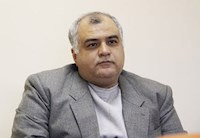Rationalization of Oral History Books (part III)
Rationalization Is Variable Over Time
Akram Dashtban
Translated by: Fazel Shirzad
2018-6-12
Note: Following report is based on an invitation in which history experts are asked questions about oral history. In this regard, one of experts, as his perspective, has answered to one of questions titled "The amount of rationalization and appendix in oral history books". We'll read these comments as follows.

In an interview with Iranian oral history website, Seyed Qasem Yahusseini, writer and researcher of history, spoke about rationalization: "The rationalization is explanation and description of ambiguous contents of a text that appears in the footnote or appendix. Rationalization about photo also includes a description of historical photographs and information on place, time and photographer.
He believed that rationalization is relative, and added: "Rationalization are different among people. If a book, for example, is written for students, there is a different way of rationalization in writing the book by researchers. In fact, rationalization is different over historical times. If an author wrote a book about Gholam Hossein Sa'edi or Dr. Ali Shariati in 1360, s/he wouldn't need for a rationalization, but today if a book is written about Shariati, many topics should be rationalized in footnote or the end of book. In other words, rationalization is a floating issue that is different according time and place. For example, if you write a book about province Bushehr, you do not need rationalization to explain places, but if it is a country issue, places and other parameters should be rationalized.
Yahusseini went on to say that oral memory is a subset of oral history, and rationalization is not same in these two formats, and added: "The book's rationalization should not be long. All the terms should not be mentioned in it, except in rare cases; in the manner in which author himself/herself has gained that information. For example, Raheem Raisnia published a book titled "The Last Bulwark of Liberty". This book included the series of articles by Seyed Ja'far Pishevari published in Haghighat[1] newspaper and its publisher named Seyed Mohammad Dehghan. Raisinia, at the end of book of Seyed Ja'far Pishevari, introduced newspaper Haghighat and Seyed Mohammad Dehghan and presented piece of information that was published for first time; or appendix of Mohsen Kazemi's books [1]which is as an independent investigation.
He explained in more detail about the amount of rationalization in books: The text should be so perfect that it does not need to be rationalized, the text included in the footnote should be brief and minimal. If something is written by referring to generations, places or people, it should be mentioned in general terms, and if rationalization is about geographic location, it should be mentioned alphabetically.
Yahusseini further referred to rationalization of photographs in oral history books and said: "If a photo is rationalized accurately, it will become a document in which you must mention location, persons in the photo, the date of the photograph and, as far as possible, the name of the photographer."
He goes on to say that rationalization is considered as a advantage of a work:" In the past, it was a very difficult task to rationalize, but today it's easy to do by using internet and various research sites. Rationalization allows addresses to get acquainted with characters, and gaining references and additional resources as well. The more book is power in providing references and resources, the more book is valuable text for readers. Of course, author must be careful that rationalization of book not to be an inappropriate one.
Iranian oral history website asks question to experts about oral history, and publish responses to readers. Total responses will have remarkable results. If you have any questions, please feel free to submit it via this page to read comments from experts of oral history!
Number of Visits: 3519








The latest
Most visited
The Arab People Committee
Another event that happened in Khuzestan Province and I followed up was the Arab People Committee. One day, we were informed that the Arabs had set up a committee special for themselves. At that time, I had less information about the Arab People , but knew well that dividing the people into Arab and non-Arab was a harmful measure.Kak-e Khak
The book “Kak-e Khak” is the narration of Mohammad Reza Ahmadi (Haj Habib), a commander in Kurdistan fronts. It has been published by Sarv-e Sorkh Publications in 500 copies in spring of 1400 (2022) and in 574 pages. Fatemeh Ghanbari has edited the book and the interview was conducted with the cooperation of Hossein Zahmatkesh.Is oral history the words of people who have not been seen?
Some are of the view that oral history is useful because it is the words of people who have not been seen. It is meant by people who have not been seen, those who have not had any title or position. If we look at oral history from this point of view, it will be objected why the oral memories of famous people such as revolutionary leaders or war commanders are compiled.Daily Notes of a Mother
Memories of Ashraf-al Sadat SistaniThey bring Javad's body in front of the house. His mother comes forward and says to lay him down and recite Ziarat Warith. His uncle recites Ziarat and then tells take him to the mosque which is in the middle of the street and pray the funeral prayer (Ṣalāt al-Janāzah) so that those who do not know what the funeral prayer is to learn it.


